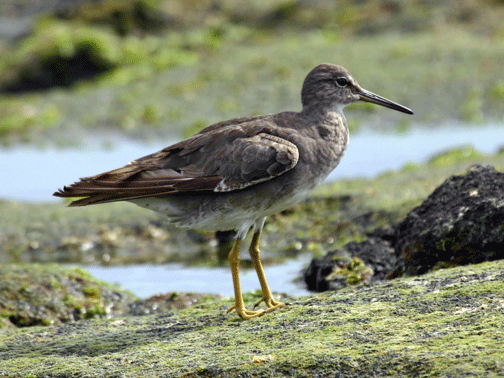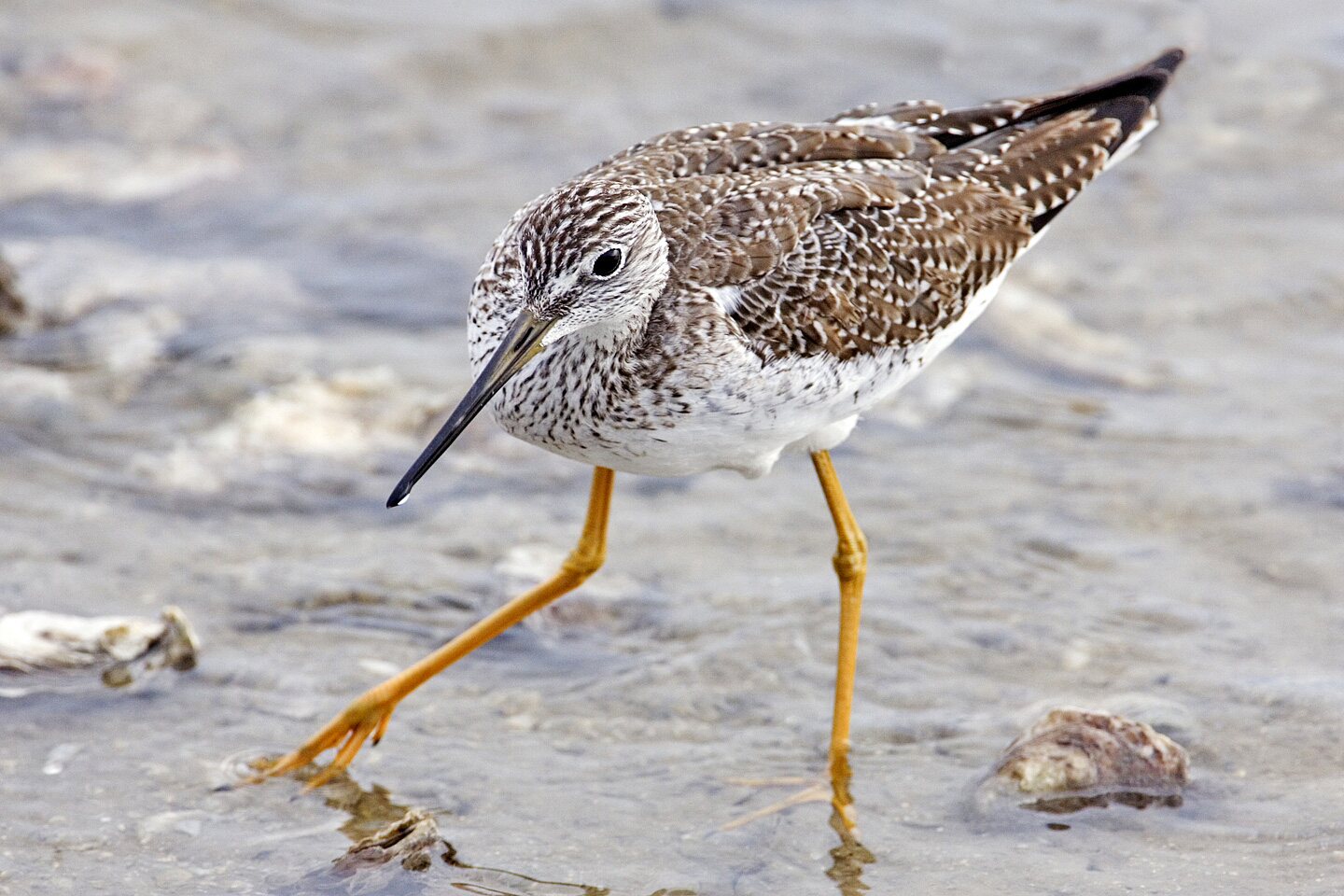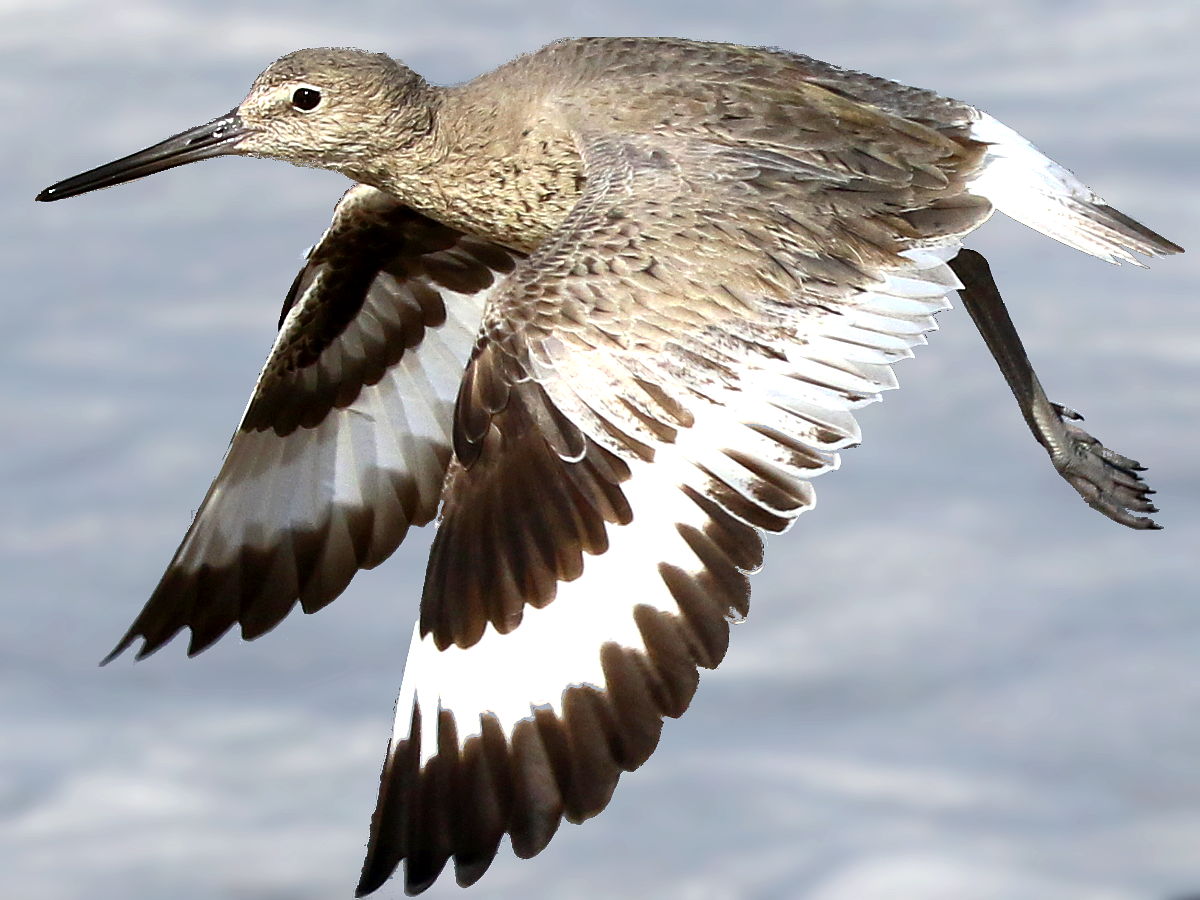|
Totanus
''Totanus'' (Bechstein, 1803) is a generic name previously applied to various waders or shorebirds, now subsumed within '' Tringa''. Created by Johann Matthäus Bechstein Johann Matthäus Bechstein (11 July 1757 – 23 February 1822) was a German naturalist, forester, ornithologist, entomologist, and herpetologist. In Great Britain, he was known for his treatise on singing birds (''Naturgeschichte der Stubenvög ..., it derives from the species name for the common redshank, described by Carl Linnaeus in his landmark 1758 10th edition of ''Systema Naturae'' as ''Scolopax totanus'', from ''totano'', the Italian name for the bird.Higgins, P. J.; & Davies, S. J. J. F. (Eds). (1996). ''Handbook of Australian, New Zealand and Antarctic Birds. Volume 3: Snipe to Pigeons''. Oxford University Press: Melbourne. (page 131) Birds once placed in the genus include: * Common redshank (''Totanus totanus''), now ''Tringa totanus'' * Greater yellowlegs (''Totanus melanoleucus''), now ' ... [...More Info...] [...Related Items...] OR: [Wikipedia] [Google] [Baidu] |
Tringa
''Tringa'' is a genus of waders, containing the shanks and tattlers. The genus name ''Tringa'' is the New Latin name given to the green sandpiper by the Italian naturalist Ulisse Aldrovandi in 1599. They are mainly freshwater birds, often with brightly coloured legs as reflected in the English names of six species, as well as the specific names of two of these and the green sandpiper. They are typically associated with northern hemisphere temperate regions for breeding. Some of this group—notably the green sandpiper—nest in trees, using the old nests of other birds, usually thrushes. The willet and the tattlers have been found to belong in ''Tringa''; these genus changes were formally adopted by the American Ornithologists' Union in 2006. The present genus in the old, more limited sense was even further subdivided into ''Tringa'' proper and ''Totanus'', either as subgenera or as full genera. The available DNA sequence data suggests however that neither of these is monophyl ... [...More Info...] [...Related Items...] OR: [Wikipedia] [Google] [Baidu] |
Common Redshank
The common redshank or simply redshank (''Tringa totanus'') is a Eurasian wader in the large family Scolopacidae. Taxonomy The common redshank was formally described by the Swedish naturalist Carl Linnaeus in 1758 in the tenth edition of his ''Systema Naturae'' under the binomial name ''Scolopax totanus''. It is now placed with twelve other species in the genus ''Tringa'' that Linnaeus had introduced in 1758. The genus name ''Tringa'' is the New Latin name given to the green sandpiper by the Italian naturalist Ulisse Aldrovandi in 1603 based on Ancient Greek ''trungas'', a thrush-sized, white-rumped, tail-bobbing wading bird mentioned by Aristotle. The specific ''totanus'' is from , the Italian name for this bird. Six subspecies are recognised: * ''T. t. robusta'' ( Schiøler, 1919) – breeds in Iceland and the Faroe Islands; non-breeding around the British Isles and west Europe * ''T. t. totanus'' (Linnaeus, 1758) – breeds in west, north Europe to west Siberia; winters in ... [...More Info...] [...Related Items...] OR: [Wikipedia] [Google] [Baidu] |
Greater Yellowlegs
The greater yellowlegs (''Tringa melanoleuca'') is a large shorebird in the family Scolopacidae. It breeds in central Canada and southern Alaska and winters in southern North America, Central America, the West Indies and South America. Taxonomy The greater yellowlegs was formally described in 1789 by the German naturalist Johann Friedrich Gmelin in his revised and expanded edition of Carl Linnaeus's ''Systema Naturae''. He placed it in the genus '' Scolopax'' and coined the binomial name ''Scolopax melanoleuca''. Gmelin based his description on the "stone snipe" seen feeding in autumn in Chateau Bay, Labrador, that had been described in 1785 by both the English ornithologist John Latham and by the Welsh naturalist Thomas Pennant. The greater yellowlegs is now placed in the genus ''Tringa'' that was introduced in 1758 by the Swedish naturalist Carl Linnaeus in the tenth edition of his ''Systema Naturae''. The name ''Tringa'' is the New Latin word given to the green sandpiper by ... [...More Info...] [...Related Items...] OR: [Wikipedia] [Google] [Baidu] |
Lesser Yellowlegs
The lesser yellowlegs (''Tringa flavipes'') is a medium-sized shorebird. It breeds in the boreal forest region of North America. Taxonomy The lesser yellowlegs was formally described in 1789 by the German naturalist Johann Friedrich Gmelin in his revised and expanded edition of Carl Linnaeus's ''Systema Naturae''. He placed it in the genus '' Scolopax'' and coined the binomial name ''Scolopax flavipes''. Gmelin based his description on the "yellow shanks" seen in the province of New York in autumn that had been described in 1785 by both the English ornithologist John Latham and by the Welsh naturalist Thomas Pennant. The lesser yellowlegs is now placed in the genus ''Tringa'' that was introduced in 1758 by the Swedish naturalist Carl Linnaeus in the tenth edition of his ''Systema Naturae''. The name ''Tringa'' is the New Latin word given to the green sandpiper by the Italian naturalist Ulisse Aldrovandi in 1603 based on Ancient Greek ''trungas'', a thrush-sized, white-rumped, ... [...More Info...] [...Related Items...] OR: [Wikipedia] [Google] [Baidu] |
Willet
The willet (''Tringa semipalmata'') is a large shorebird in the family Scolopacidae. It is a relatively large and robust sandpiper, and is the largest of the species called "shanks" in the genus ''Tringa''. Its closest relative is the lesser yellowlegs, a much smaller bird with a very different appearance apart from the fine, clear, and dense pattern of the neck, which both species show in breeding plumage. It breeds in North America and the West Indies and winters in southern North America, Central America, the West Indies and South America. Taxonomy The willet was formally described in 1789 by the German naturalist Johann Friedrich Gmelin in his revised and expanded edition of Carl Linnaeus's ''Systema Naturae''. He placed it in the genus '' Scolopax'' and coined the binomial name ''Scolopax semipalmata''. Gmelin based his description on the "semipalmated snipe" from New York that had been described in 1785 by both the English ornithologist John Latham and by the Welsh natura ... [...More Info...] [...Related Items...] OR: [Wikipedia] [Google] [Baidu] |
Sandpipers
Sandpipers are a large family, Scolopacidae, of waders. They include many species called sandpipers, as well as those called by names such as curlew and snipe. The majority of these species eat small invertebrates picked out of the mud or soil. Different lengths of bills enable different species to feed in the same habitat, particularly on the coast, without direct competition for food. Sandpipers have long bodies and legs, and narrow wings. Most species have a narrow bill, but otherwise the form and length are quite variable. They are small to medium-sized birds, measuring in length. The bills are sensitive, allowing the birds to feel the mud and sand as they probe for food. They generally have dull plumage, with cryptic brown, grey, or streaked patterns, although some display brighter colours during the breeding season. Most species nest in open areas, and defend their territories with aerial displays. The nest itself is a simple scrape in the ground, in which the bird typic ... [...More Info...] [...Related Items...] OR: [Wikipedia] [Google] [Baidu] |
Common Redshank Tringa Totanus
Common may refer to: Places * Common, a townland in County Tyrone, Northern Ireland * Boston Common, a central public park in Boston, Massachusetts * Cambridge Common, common land area in Cambridge, Massachusetts * Clapham Common, originally common land, now a park in London, UK * Common Moss, a townland in County Tyrone, Northern Ireland * Lexington Common, a common land area in Lexington, Massachusetts * Salem Common Historic District, a common land area in Salem, Massachusetts People * Common (rapper) (born 1972), American hip hop artist, actor, and poet * Andrew Ainslie Common (born 1841), English amateur astronomer * Andrew Common (born 1889), British shipping director * John Common, American songwriter, musician and singer * Thomas Common (born 1850), Scottish translator and literary critic Arts, entertainment, and media * ''Common'' (film), a 2014 BBC One film, written by Jimmy McGovern, on the UK's Joint Enterprise Law * Dol Common, a character in ''The Alchemis ... [...More Info...] [...Related Items...] OR: [Wikipedia] [Google] [Baidu] |
Wader
245px, A flock of Dunlins and Red knots">Red_knot.html" ;"title="Dunlins and Red knot">Dunlins and Red knots Waders or shorebirds are birds of the order Charadriiformes commonly found wikt:wade#Etymology 1, wading along shorelines and mudflats in order to foraging, forage for food crawling or burrowing in the mud and sand, usually small arthropods such as aquatic insects or crustaceans. The term "wader" is used in Europe, while "shorebird" is used in North America, where "wader" may be used instead to refer to long-legged wading birds such as storks and herons. There are about 210 species of wader, most of which live in wetland or coastal environments. Many species of Arctic and temperate regions are strongly migratory, but tropical birds are often resident, or move only in response to rainfall patterns. Some of the Arctic species, such as the little stint, are amongst the longest distance migrants, spending the non- breeding season in the southern hemisphere. Many of the s ... [...More Info...] [...Related Items...] OR: [Wikipedia] [Google] [Baidu] |
Johann Matthäus Bechstein
Johann Matthäus Bechstein (11 July 1757 – 23 February 1822) was a German naturalist, forester, ornithologist, entomologist, and herpetologist. In Great Britain, he was known for his treatise on singing birds (''Naturgeschichte der Stubenvögel'', ''Natural History of Cage Birds'', 1795). Biography Bechstein was born in Waltershausen in the district of Gotha in Thuringia. He studied theology for four years at the University of Jena, and spent time hunting and roaming the forests as opportunities permitted. After leaving school, he taught for some years, but gave teaching up to devote himself to outdoor pursuits. In 1795, he founded the school of forestry at Waltershausen, and in 1800, the Duke of Saxe-Meiningen made him the director of the forestry school at Dreissigacker near Meiningen in the neighbouring district of Schmalkalden-Meiningen. After the death of his own son, Bechstein adopted his nephew Ludwig Bechstein. Bechstein was a prolific zoologist and one of the first ... [...More Info...] [...Related Items...] OR: [Wikipedia] [Google] [Baidu] |
Carl Linnaeus
Carl Linnaeus (; 23 May 1707 – 10 January 1778), also known after his ennoblement in 1761 as Carl von Linné Blunt (2004), p. 171. (), was a Swedish botanist, zoologist, taxonomist, and physician who formalised binomial nomenclature, the modern system of naming organisms. He is known as the "father of modern taxonomy". Many of his writings were in Latin; his name is rendered in Latin as and, after his 1761 ennoblement, as . Linnaeus was born in Råshult, the countryside of Småland, in southern Sweden. He received most of his higher education at Uppsala University and began giving lectures in botany there in 1730. He lived abroad between 1735 and 1738, where he studied and also published the first edition of his ' in the Netherlands. He then returned to Sweden where he became professor of medicine and botany at Uppsala. In the 1740s, he was sent on several journeys through Sweden to find and classify plants and animals. In the 1750s and 1760s, he continued to collect an ... [...More Info...] [...Related Items...] OR: [Wikipedia] [Google] [Baidu] |
10th Edition Of Systema Naturae
The 10th edition of ''Systema Naturae'' is a book written by Swedish naturalist Carl Linnaeus and published in two volumes in 1758 and 1759, which marks the starting point of zoological nomenclature. In it, Linnaeus introduced binomial nomenclature for animals, something he had already done for plants in his 1753 publication of '' Species Plantarum''. Starting point Before 1758, most biological catalogues had used polynomial names for the taxa included, including earlier editions of ''Systema Naturae''. The first work to consistently apply binomial nomenclature across the animal kingdom was the 10th edition of ''Systema Naturae''. The International Commission on Zoological Nomenclature therefore chose 1 January 1758 as the "starting point" for zoological nomenclature, and asserted that the 10th edition of ''Systema Naturae'' was to be treated as if published on that date. Names published before that date are unavailable, even if they would otherwise satisfy the rules. The only ... [...More Info...] [...Related Items...] OR: [Wikipedia] [Google] [Baidu] |
Italian Language
Italian (''italiano'' or ) is a Romance language of the Indo-European language family that evolved from the Vulgar Latin of the Roman Empire. Together with Sardinian, Italian is the least divergent language from Latin. Spoken by about 85 million people (2022), Italian is an official language in Italy, Switzerland (Ticino and the Grisons), San Marino, and Vatican City. It has an official minority status in western Istria (Croatia and Slovenia). Italian is also spoken by large immigrant and expatriate communities in the Americas and Australia.Ethnologue report for language code:ita (Italy) – Gordon, Raymond G., Jr. (ed.), 2005. Ethnologue: Languages of the World, Fifteenth edition. Dallas, Tex.: SIL International. Online version Itali ... [...More Info...] [...Related Items...] OR: [Wikipedia] [Google] [Baidu] |



.jpg)




